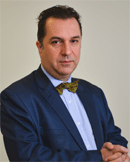My Experience at Do well do good ESSEC Program

In this article, Lara HADDAD (ESSEC Business School, Bachelor in Business Administration (BBA), 2020-2024) shares her experience as a business analyst in partnership with ESSEC at Do well do good (Formerly ShARE) ESSEC Program. I was able to work with different startups from different industries to better recommend solutions to their problems.
Presentation of the Company
Do well do good is a management consulting NGO partnering with universities worldwide. Its mission is to empower startups with the strategic guidance and resources needed to achieve sustainable growth and profitability. This involves a diverse range of consulting services, including market analysis, financial planning, and strategic development.
Logo of dwdg.

Source: the company.
Presentation of my Internship
My role as a Business Analyst involved supporting three French startups: Lattice Medicine (B2B medical devices), Mendo (AI tool), and Luko (insurance services). My responsibilities ranged from conducting benchmarking and cost optimization analyses for Lattice Medicine to developing market entry strategies for Mendo and improving profitability for Luko through pricing and customer acquisition/retention strategies. This experience required strong analytical skills, financial acumen, and the ability to adapt to the unique challenges of different industries. I learned how financial analysis and strategic planning are intertwined in driving business success, particularly for startups. It was a way for me to combine my passion for finance and strategy to achieve a specific objective. It was particularly interesting to discover new industries and work with experts in the field.
Required skills and knowledge
This experience demanded a blend of hard and soft skills. Hard skills included financial modeling, market analysis, and proficiency in Microsoft Excel for data manipulation and presentation. Equally crucial were soft skills like communication, as I constantly interacted with startup founders and team members. Adaptability was essential to navigate the diverse challenges of different industries, while problem-solving and decision-making skills were key to developing effective solutions for each startup. Finally, time management was crucial to juggle multiple projects simultaneously and meet deadlines.
What I learned
I learned a lot from this experience because it provided me invaluable hands-on experience in applying financial and strategic concepts to real-world business challenges. I gained a deeper understanding of the startup ecosystem, learned how to conduct thorough market research, and developed my financial modeling skills. Working with diverse startups broadened my industry knowledge and honed my ability to adapt quickly to different business models and needs. Perhaps most importantly, I learned the importance of collaboration and communication in a consulting environment.
Three Key Financial Concepts
I present below three key concepts that I used throughout my internship: cost optimization, market penetration, and profitability analysis.
Cost Optimization
Identifying and implementing strategies to reduce costs without compromising quality was a key focus of my work with Lattice Medicine. This involved analyzing expenses, exploring alternative solutions, and developing efficient processes.
Market Penetration
Developing a successful market entry strategy for Mendo required a deep understanding of target markets, competitive landscapes, and financial feasibility. This involved conducting market research, financial projections, and risk assessments.
Profitability Analysis
Improving Luko’s profitability involved analyzing pricing models, customer acquisition costs, and retention rates. This experience highlighted the importance of understanding key financial drivers and their impact on overall business performance.
Why should I be interested in this post?
For ESSEC students interested in finance, this post offers a glimpse into the world of consulting, particularly within the dynamic startup landscape. It demonstrates how core financial skills can be applied to help businesses grow and succeed. The experience of working with multiple startups across different industries is highly valuable for anyone considering a career in financial advisory, venture capital, or entrepreneurship. This type of program can provide a strong foundation for future roles requiring financial analysis, strategic thinking, and problem-solving.
Related posts on the SimTrade blog
▶ All posts about Professional experiences
▶ Mickael RUFFIN My Internship experience as a Strategy Consultant at Devlhon Consulting
▶ Snehasish CHINARA My Experience as an External Junior Consultant with Eurogroup Consulting
▶ Alexandre VERLET Classic brain teasers from real-life interviews
Useful Resources
About the author
The article was written in December 2024 by Lara HADDAD (ESSEC Business School, Bachelor in Business Administration (BBA), 2020-2024).



